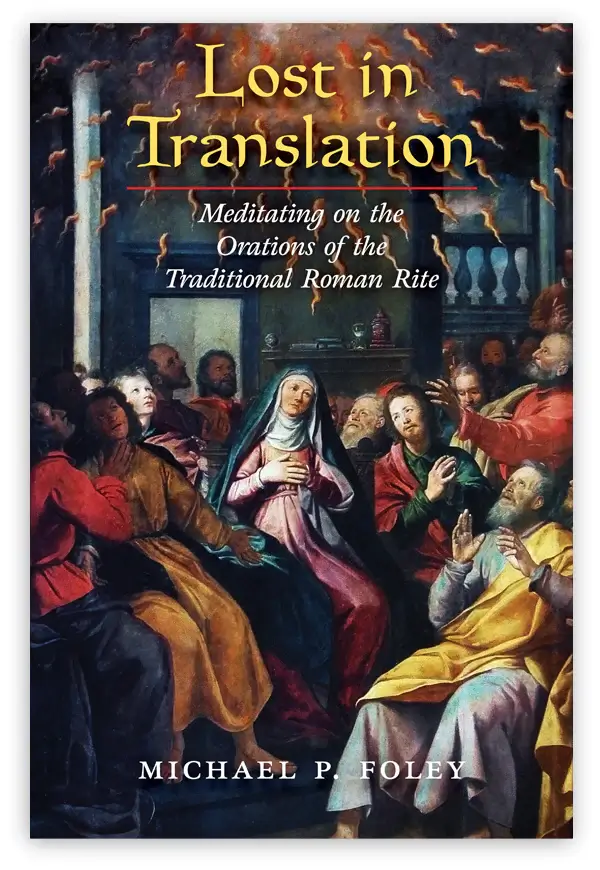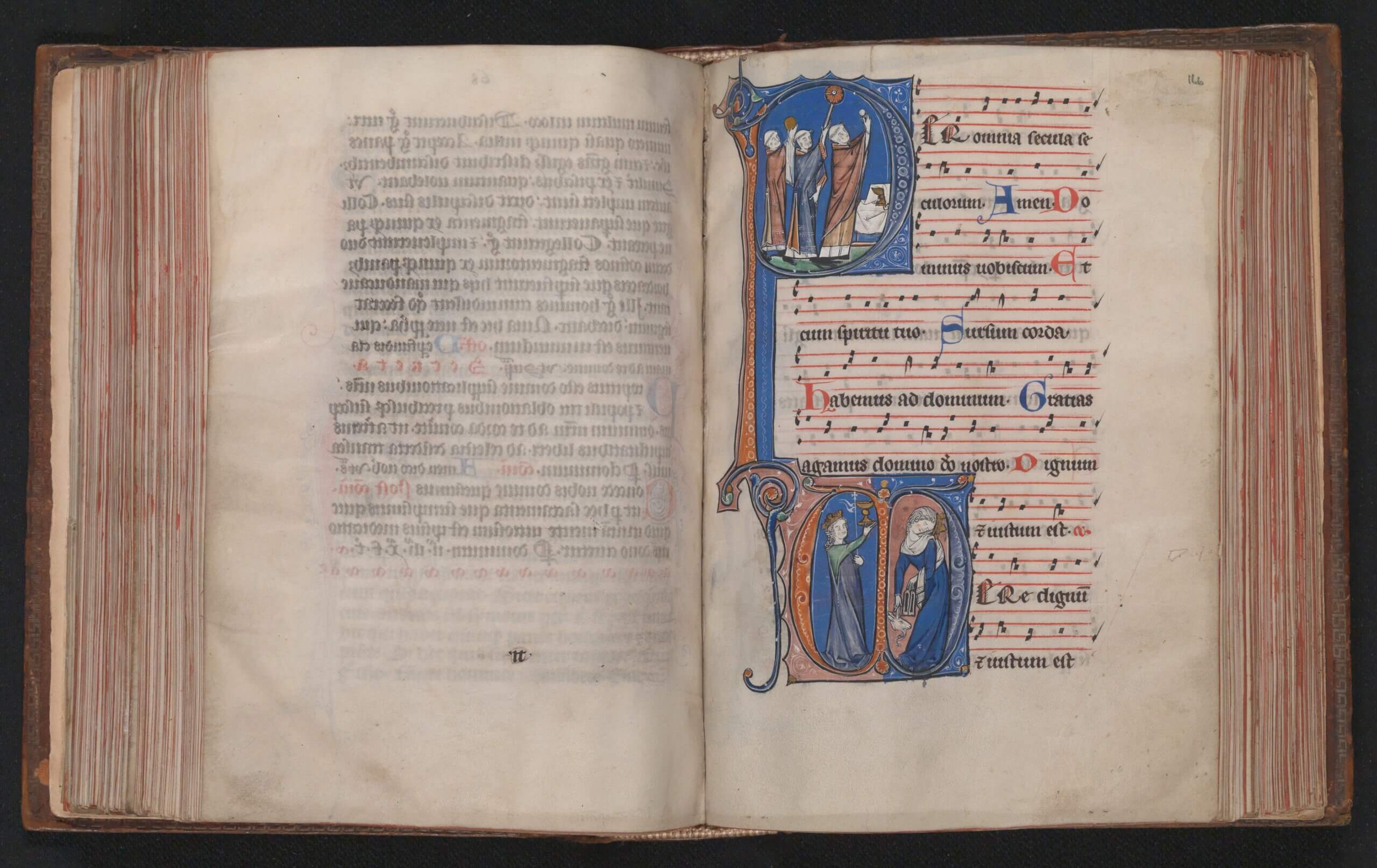
Timothy Flanders: Thank you for speaking with me, Dr. Foley. Our readers may recognise you from the Mass of the Ages documentary. Were you raised in the Latin Mass or did you encounter it later? Tell us about that.
Michael Foley: I came upon the Latin Mass by chance in my early twenties. I was in grad school in Boston when a friend invited me to a church that was having a special anniversary (Novus Ordo) Mass. As we were walking out of the church, I saw a sign that read “Tridentine Latin Mass 12:30 p.m.” I did not know what that meant, but because I was tired of the liturgical abuses that I witnessed at every parish I visited, I was willing to try anything. The next week I returned to the church and attended my first Low Mass. I will confess that initially I was slightly miffed by the experience. I was used to the Mass being more about me (!), and it was clear that the celebrant was completely fixated on God. But I was intrigued, and so I returned the following week. After about ten or twelve Sundays in a row, I was hooked.
I know many of us can relate to this of course. What year was this and what was the atmosphere like in the greater Church toward the Latin Mass?
Around 1994. In those days, the Latin Mass was viewed with great suspicion, even by conservatives and orthodox Catholics. The Archdiocese of Boston, where I first encountered the Latin Mass, was no different. Pope John Paul II had encouraged bishops to be generous in granting an indult to celebrate the Latin Mass, but when an indult was sought from Cardinal Bernard Law, he refused. It was only when the petitioners went over his head and complained to Rome that he allowed one Mass, in a bad part of town, for the 1.5 million Catholics in his care. The chancery was so disdainful of the Latin Mass that they forbade practices that even remotely smacked of liturgical life before Vatican II. During one Lent, they sent out a sharply-worded letter to every parish banning the veiling of sacred images during Passiontide. Less than a year later, the Boston sex abuse scandal broke. You could see where their priorities lay.
Yes that does unfortunately tell a lot. Can you tell us what became of that indult parish and the Latin Mass in Boston up to the present? Are you still in Boston now?
Sadly, the Archdiocese closed and sold the parish, Holy Trinity German Church, in order to remunerate the victims of its predator priests. On a happy note, around a dozen churches in the greater Boston metro area are now celebrating the Latin Mass, including the cathedral.
My family and I have lived in Waco, Texas for the past nineteen years, where I teach in the Great Texts Program at Baylor University. I taught for three years in the Department of Theology at the University of Notre Dame before that.
That must have been quite a shift to move from the New England area to Waco, Texas. What is the Latin Mass community like in your area? Have you attended the Latin Mass every Sunday since that moment in Boston?
My wife and I met after a Latin Mass at Holy Trinity German Church and were married there. Ever since then we have tried to attend the Latin Mass whenever possible. There were two hiatuses: when we lived in South Bend for three years (and went to St. Michael’s Ukrainian [Byzantine] Catholic Church, which was wonderful), and when we moved to Waco in 2004. There was no Latin Mass in the area, and the bishop at the time refused to grant us an indult. Fortunately, that changed after Summorum Pontificum was promulgated in 2007, and we had a Latin Mass on the day that it took effect. Today, the Latin Mass in Waco is celebrated every weekend at the St. Peter Catholic Student Center, where it attracts both young and old. As far as I can tell, it is one of only two places in the country where the Latin Mass is regularly celebrated in a “Newman Center” for a non-Catholic university.
That’s great to hear. Finally, before we get into your new book, can you tell us something about your area of academic study and interest? Is this your first book?
This is actually my seventeenth book. I am probably best known for my four books on drinking and dining with the Saints (see here, here, here, and here), but my real area of specialization is the Church Fathers, especially Saint Augustine. I edited Frank Sheed’s translation of the Confessions and translated Saint Augustine’s earliest dialogues in four volumes. And, of course, I love to study sacred liturgy.
Wow that’s a lot! When did you first start thinking about the ideas in your new book? Is this your first book on the Latin Mass?
Thanks! It’s been fun. My latest book, Lost in Translation, began as a series of articles on the New Liturgical Movement website. It is my first book devoted entirely to the subject of the 1962 Roman Missal–although, my drinking and dining books also follow the 1962 Church calendar.
“Translation” is a fitting aspect of the liturgy debates. It is often thought that the Novus Ordo is merely the Latin Mass except in English. What did you discover in studying the Latin Mass?
I once thought that, too, but it is a false claim. The Ordinary of the Mass (its unchanging parts) was significantly changed by way of both addition and subtraction. And the Propers (the parts that change from day to day) are different as well. Only 13% of the Orations in the 1962 Missal (the Collect, Secret, and Postcommunion) are included verbatim in the 1970 Missal. The rest were either altered (and usually not for the better) or scrapped altogether. The subject of Lost in Translation is these traditional Orations, which are magnificent gems.
Yes I’m aware of the work of Lauren Pristas and Matthew Hazell on this question, scholarship that very few among the clergy, it seems, have availed themselves to. What does your new book bring to this discussion of the Orations?
My goal in Lost in Translation is to take the wisdom of Pristas, Hazell, and others and make it accessible to a wider audience. And more than that, I want people to cherish the Roman Orations (which are literary masterpieces) and to use them as a portal, so to speak, into the liturgical occasion of the day. That is why I have an entry for every Sunday and major holiday of the year.
OK, tell us about the structure of the book. Are you saying it’s meant to be used devotionally?
Yes it is! Before you go to Mass on Sunday, look up the chapter for that Sunday and ruminate on it. You will find how wise our spiritual ancestors were when they crafted these prayers for our use.
This is a wonderful resource! For me, the Collect which “converted me” to the TLM was seeing how the Novus Ordo “censored” the Collect for the Holy Innocents. Can you give us a few examples of these prayers, how they were changed, and what wisdom was lost?
There are many examples similar to the one you mention because the relator of the subcommittee in charge of the prayers and prefaces, a Fr. Antoine Dumas, wanted to replace every element that he deemed “negative” with a “a more dynamic positive.” The example he gave was of an old Collect that asks God to protect His flock from diabolical attacks (a rather clever portrayal of the Devil as a ravenous wolf). Dumas replaced the image with a petition to lie down in eternal pastures. I am tempted to say that the liturgical reformers Disneyized the Orations, but even Disney makes use of the Big Bad Wolf.
Another example is what happened to Pope Pius XI’s Feast of Christ the King, which was not simply moved from the last Sunday of October to the last Sunday of Ordinary Time but replaced by a new feast with a new theme. The old feast affirms the social reign of Christ the King over us here and now while the new feast celebrates Jesus Christ as a cosmic king of the universe at the end of time. The differences can be seen almost everywhere, including the prayers. The old Collect prays that nations be subject to Christ; the new Collect prays that creation may one day praise Him.
This is a very important aspect of the debate which is rarely heard, since it proves that the “Reverent Novus Ordo,” even when celebrated in Latin, is not enough. Even the Latin Novus Ordo loses so much of our patrimony that was handed down from ancient times. Can you give us any more examples of particular orations that have meant something to you and how they are treated in your book?
There are a couple of Orations that offer a profound map of how to live a happy life. One of my favorites is the Collect for the Fifth Sunday after Pentecost (which is one of the 13% that made it into the new Missal unaltered, appearing as the Collect of the Twentieth Sunday in Ordinary Time):
O God, who hast prepared invisible goods for those who love Thee: pour forth into our hearts the affect of Thy love: that loving Thee in all things and above all things, we may obtain Thy promises, which exceed every desire. Through Our Lord.
The Collect is a classic example of what Pope Benedict XVI means when he calls sacred liturgy a “school of love.” This is a prayer about how to become a better lover. God does not want us to love less but to love more (I love the concept of loving God in all things and above all things), and yet no matter how much we love, He is going to give us invisible goods that surpass our wildest desires. The prayer is also a pithy refutation of those who think that Christianity is a killjoy.
How can your book help the faithful pray the Mass?
Whether the Mass is in English or in Latin, in the old form or the new, it is difficult to savor the Orations during the liturgy for the simple reason that they are over in a matter of seconds. My book allows you to stop and smell the roses and to appreciate the genius of these prayers. And that will help you pray these prayers more deeply.
How do you hope your book contributes to the wider Trad movement?
This book is the fruit of my long-standing love of the traditional Roman rite, and I want that love to be contagious. My hope is that Lost in Translation will give traditional Catholics yet another reason to love the Roman liturgical tradition and to draw closer to our loving God.


